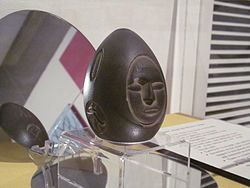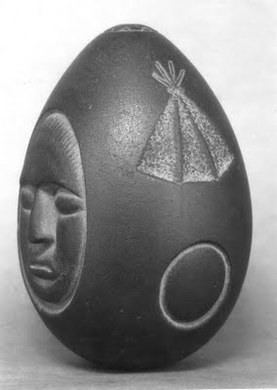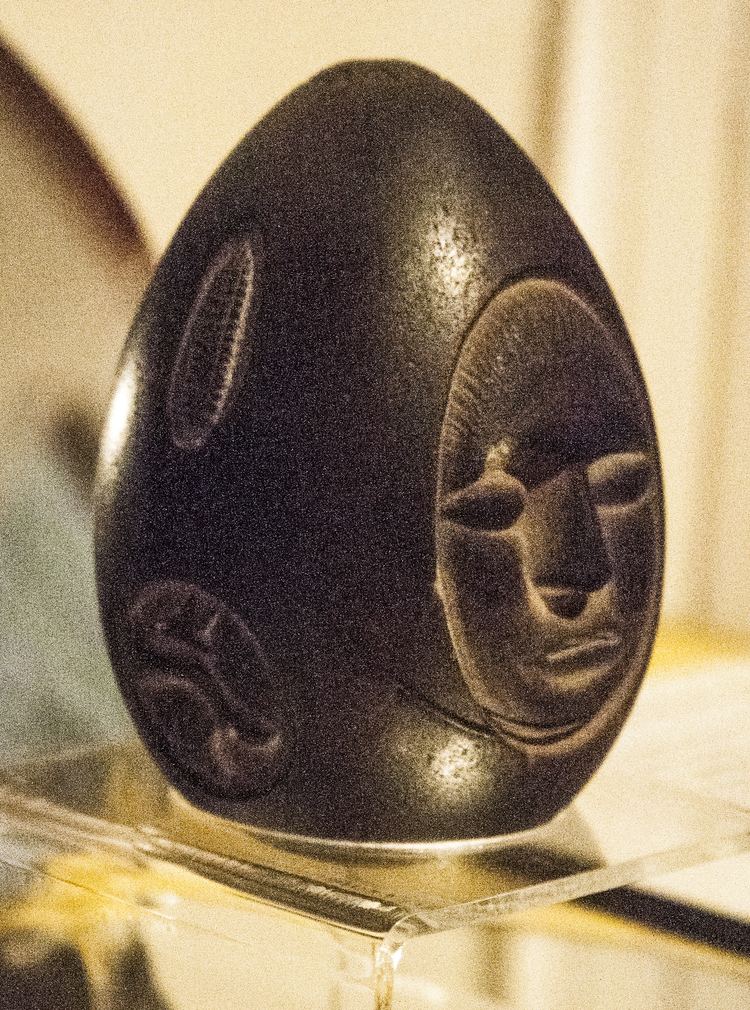 | ||
The mystery stone from Lake Winnipesaukee in New Hampshire is an alleged out-of-place artifact (OOPArt). The stone's age, purpose, and origin are unknown.
Contents

The stone is about 4 inches (100 mm) long and 2.5 inches (64 mm) thick, dark and egg-shaped, bearing a variety of carved symbols. Carvings on one side of the stone show an ear of corn and several other figures. The other side is more abstract, featuring inverted arrows, a moon shape, some dots and a spiral.

A hole goes through the stone from top to bottom, seemingly bored from both ends with different size bits (1⁄8 inch (3.2 mm) at the top and 3⁄8 inch (9.5 mm) at the bottom).

History

In 1872, the stone was reportedly found in Meredith, New Hampshire, while workers were digging a hole for a fence post. Seneca Ladd, a Meredith businessman who hired the workers, was given credit for the discovery. In 1892, upon Ladd's death, the stone passed to Frances Ladd Coe of Center Harbor, one of his daughters. In 1927, she donated the stone to the New Hampshire Historical Society.
The stone is currently on exhibit at the Museum of New Hampshire History.
Analysis and interpretation

A contemporary source suggested that the stone "commemorates a treaty between two tribes". Another writer later suggested it is a thunderstone, and that thunderstones "always present the appearance of having been machined or hand-worked: frequently they come from deep in the earth, embedded in lumps of clay, or even surrounded by solid rock or coral".

In 1994, a borescope analysis of the stone's holes was performed. State archaeologist Richard Boisvert later suggested that the holes had the appearance of having been drilled by power tools from the 19th or 20th century:
"I've seen a number of holes bored in stone with technology that you would associate with prehistoric North America. There's a certain amount of unevenness ... and this hole was extremely regular throughout. What we did not see was variations that would be consistent with something that was several hundred years old."
Scratches in the lower bore suggest it was placed on a metal shaft and removed several times.
Analysis has concluded the stone is a type of quartzite, derived from sandstone, or mylonite.
